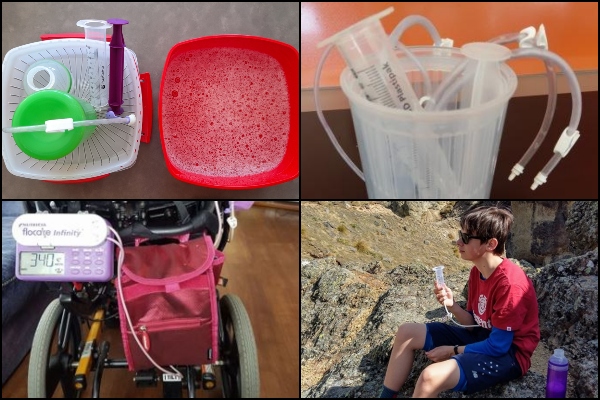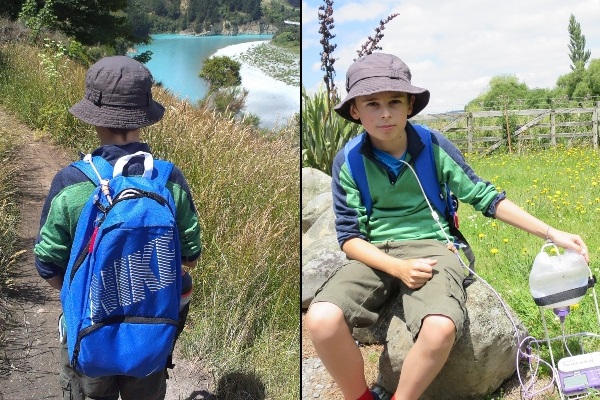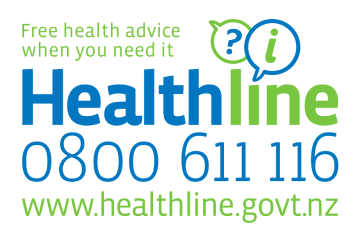Tube Feeding - Tips & Tricks From Families
Tube Feeding - Tips & Tricks From Families
Being a tube feeding family can have its challenges, but there are things which can help make the journey easier. Families have shared their tips, tricks and life hacks on what works for them. For advice about your own child, check with your health professional.
Nasogastric (NG) tubes and nasojejunal (NJ) tubes
Nasogastric (NG) and nasojejunal (NJ) tubes are both nasal tubes, but while NG tubes end in the stomach, NJ tubes end in the intestine. They are a temporary way of feeding your child.
A medical professional can teach you how to replace the tube at home.
Tips from whānau on taping NG or NJ tubes
- tape the tube in place from nose to ear - make sure there is no tube exposed so little fingers can flick it out
- use 'remove wipes' to take off the tape and soak the plaster for 30 seconds before changing it
- change the tape daily
- never tape in the same position
- wrap your pēpi/baby to keep them still and have one adult hold their head while another adult puts the tape on
"We found that taping my son's NG tube with strapping tape halved (width) was most secure and we taped it by looping it around the tube then up onto his nose once he was able to get it off his cheek so easily, this also rested the skin on his cheeks."
Other tips on NG or NJ tubes
- choose clothes with a button/snap or loop label at the back of the neck and thread the tube through a few times to stop it getting in the way
- if you think your child may vomit, lower the tube so the formula comes up out of the stomach
- use specific containers to dry, drain and store tubes and other equipment - that way it keeps them away from other dishes
Find out more about tube feeding
View photos of some of the tips and tricks
Some of the hacks parents and tube-feeding children use to make life a bit easier
Gastrostomy tubes
A gastrostomy tube goes directly into your child's stomach from the skin of your child's tummy. A doctor may put the tube in during an operation, or by a procedure called endoscopy.
Types of gastrostomy tubes include retention disk PEG, PEG-J, balloon gastrostomy or Mic-Key button.
Tips from whānau on looking after your child's gastrostomy tube and puku (tummy)
- patches, covers and protectors help hold the Mic-Key in place, protect it, keep the stomach clean and prevent hyper granulation tissue
- use baby oil to wipe off sticky patches, then wipe dry before adding another tape
- wrap the stomach/button in stretchy fabric with cotton wool protection when going out to play
- ask your homecare nurse for dressings for sore Mic-Key sites
- experiment with tape to find one which best works for you
Tips from whānau on bedding and spills
You won’t always be able to avoid spills, but there are some things you can do to make cleaning them easier.
- use plastic sheets or protectors under bed sheets to help protect the mattress
- use a waterproof pillow case under a regular one
- use traditional cloth nappies over clothes and cot sheets so they are easy to change if your pēpi vomits
- raise the top bed end with a stable base that will not move or slip
- play on a mat with a plastic backing, such as a picnic rug, to protect your floors
- have a bucket available in every room and in the car if your child is likely to vomit
- always check the port is closed before feeding - don't assume it is
"As they get older use a second bed protector like Brolly sheet - they are FANTASTIC. It's an investment, but when a leak happens, you don't have to strip the entire bed."
Find out about the process of going from tube feeding to oral feeding
Alexander enjoying another adventure. Carrying his continuous tube feeding equipment for a day out exploring the beautiful Rakaia Gorge Walkway with his whānau.
Tips from whānau on going out
There are things you can do to help make it easier when you go out with your child.
- take spare clothes, feeding tubes and extra formula
- adapt a backpack using velcro to hold tubes
- label your young child’s backpack with a note warning a feeding pump is attached and it is not to be removed
- attach a hair tie about the bolus - then you can connect it to something high
- sew a velcro handle on to a bag with a hole in the bottom and attach it to prams and wheelchairs
- sistema bags are great for holding feeds, bottles, syringes, the tube, baby formula container and a pre-mix
- hang an allergy alert on your child's bag
Other tips and tricks
Keep it normal
"We make sure we do lots of kisses, blow raspberries and have tickles on the side of the face that has the tube. We find that it helps keeps the area normal, as that is what we do on the other side of the face too!"
Teach others
"We photographed each stage of feeding to take as a guide for school, with notes on preparation and cleaning. We then laminated the two pages and added a string loop for hanging up."
Get a dietitian to help
"There are different formulas, alternatives to milk, even food blends. Get a dietitian involved."
Encourage oral stimulation
"Whenever I fed her, I encouraged oral stimulation so her mouth was always busy. Ask your nurse what to use to avoid oral aversion."
Don't be afraid to ask questions
"If you aren't sure, ask. And if you still aren't sure, keep asking."
Use wall cable holders to hang tubes
"A little life hack for those trying to stay somewhat organised with all the tube gear. I find these stick to the wall cable holders great for hanging the tubes. I got mine from Bunnings."
"My son is only 2.5 years. Letting him be involved in learning to care for his tube has been a huge help and has also helped him to become more familiar with it. He loves flushing it with water and he has even nick named it, tubie!"
Take care of yourself
Other parents of tube-feeding children say it's important to remind yourself you're doing a great job in a very difficult situation and to "hang on in there" as it can be a really hard journey.
"Get out of the house and be kind to yourself. Tube feeding is one of the toughest things you'll ever do. But you've got this."
This page last reviewed 22 March 2022.
Do you have any feedback for KidsHealth?
If you have any feedback about the KidsHealth website, or have a suggestion for new content, please get in touch with us.
Email us now

